Entry Database : PDB / ID : 5ewjTitle CRYSTAL STRUCTURE OF AMINO TERMINAL DOMAINS OF THE NMDA RECEPTOR SUBUNIT GLUN1 AND GLUN2B IN COMPLEX WITH IFENPRODIL Glutamate receptor ionotropic, NMDA 2B NMDA glutamate receptor subunit Keywords / / / Function / homology Function Domain/homology Component
/ / / / / / / / / / / / / / / / / / / / / / / / / / / / / / / / / / / / / / / / / / / / / / / / / / / / / / / / / / / / / / / / / / / / / / / / / / / / / / / / / / / / / / / / / / / / / / / / / / Biological species Xenopus laevis (African clawed frog)Homo sapiens (human)Method / / / Resolution : 2.77 Å Authors Pandit, J. Journal : Mol.Pharmacol. / Year : 2016Title : A Novel Binding Mode Reveals Two Distinct Classes of NMDA Receptor GluN2B-selective Antagonists.Authors : Stroebel, D. / Buhl, D.L. / Knafels, J.D. / Chanda, P.K. / Green, M. / Sciabola, S. / Mony, L. / Paoletti, P. / Pandit, J. History Deposition Nov 20, 2015 Deposition site / Processing site Revision 1.0 Mar 2, 2016 Provider / Type Revision 1.1 Mar 9, 2016 Group Revision 1.2 Apr 13, 2016 Group Revision 2.0 Jul 29, 2020 Group Atomic model / Data collection ... Atomic model / Data collection / Database references / Derived calculations / Structure summary Category atom_site / atom_site_anisotrop ... atom_site / atom_site_anisotrop / chem_comp / citation / diffrn_radiation_wavelength / entity / pdbx_branch_scheme / pdbx_chem_comp_identifier / pdbx_entity_branch / pdbx_entity_branch_descriptor / pdbx_entity_branch_link / pdbx_entity_branch_list / pdbx_entity_nonpoly / pdbx_nonpoly_scheme / pdbx_struct_assembly_gen / pdbx_struct_conn_angle / pdbx_struct_oper_list / struct_asym / struct_conn / struct_conn_type / struct_site / struct_site_gen Item _atom_site.B_iso_or_equiv / _atom_site.Cartn_x ... _atom_site.B_iso_or_equiv / _atom_site.Cartn_x / _atom_site.Cartn_y / _atom_site.Cartn_z / _atom_site.auth_asym_id / _atom_site.auth_atom_id / _atom_site.auth_comp_id / _atom_site.auth_seq_id / _atom_site.label_asym_id / _atom_site.label_atom_id / _atom_site.label_comp_id / _atom_site.label_entity_id / _atom_site.pdbx_formal_charge / _atom_site.type_symbol / _atom_site_anisotrop.U[1][1] / _atom_site_anisotrop.U[1][2] / _atom_site_anisotrop.U[1][3] / _atom_site_anisotrop.U[2][2] / _atom_site_anisotrop.U[2][3] / _atom_site_anisotrop.U[3][3] / _atom_site_anisotrop.pdbx_auth_asym_id / _atom_site_anisotrop.pdbx_auth_atom_id / _atom_site_anisotrop.pdbx_auth_comp_id / _atom_site_anisotrop.pdbx_auth_seq_id / _atom_site_anisotrop.pdbx_label_asym_id / _atom_site_anisotrop.pdbx_label_atom_id / _atom_site_anisotrop.pdbx_label_comp_id / _atom_site_anisotrop.type_symbol / _chem_comp.name / _chem_comp.type / _citation.journal_id_CSD / _pdbx_struct_assembly_gen.asym_id_list / _pdbx_struct_conn_angle.ptnr1_auth_seq_id / _pdbx_struct_conn_angle.ptnr1_label_asym_id / _pdbx_struct_conn_angle.ptnr2_label_asym_id / _pdbx_struct_conn_angle.ptnr3_auth_seq_id / _pdbx_struct_conn_angle.ptnr3_label_asym_id / _pdbx_struct_conn_angle.value / _pdbx_struct_oper_list.symmetry_operation / _struct_conn.conn_type_id / _struct_conn.id / _struct_conn.pdbx_dist_value / _struct_conn.pdbx_leaving_atom_flag / _struct_conn.pdbx_role / _struct_conn.ptnr1_auth_asym_id / _struct_conn.ptnr1_auth_comp_id / _struct_conn.ptnr1_auth_seq_id / _struct_conn.ptnr1_label_asym_id / _struct_conn.ptnr1_label_atom_id / _struct_conn.ptnr1_label_comp_id / _struct_conn.ptnr1_label_seq_id / _struct_conn.ptnr2_auth_asym_id / _struct_conn.ptnr2_auth_comp_id / _struct_conn.ptnr2_auth_seq_id / _struct_conn.ptnr2_label_asym_id / _struct_conn.ptnr2_label_atom_id / _struct_conn.ptnr2_label_comp_id / _struct_conn_type.id Description / Provider / Type Revision 2.1 Sep 27, 2023 Group Data collection / Database references ... Data collection / Database references / Derived calculations / Refinement description / Structure summary Category chem_comp / chem_comp_atom ... chem_comp / chem_comp_atom / chem_comp_bond / database_2 / pdbx_initial_refinement_model / struct_conn Item _chem_comp.pdbx_synonyms / _database_2.pdbx_DOI ... _chem_comp.pdbx_synonyms / _database_2.pdbx_DOI / _database_2.pdbx_database_accession / _struct_conn.pdbx_leaving_atom_flag Revision 2.2 Nov 20, 2024 Group / Category / pdbx_modification_feature
Show all Show less
 Yorodumi
Yorodumi Open data
Open data Basic information
Basic information Components
Components Keywords
Keywords Function and homology information
Function and homology information Homo sapiens (human)
Homo sapiens (human) X-RAY DIFFRACTION /
X-RAY DIFFRACTION /  SYNCHROTRON /
SYNCHROTRON /  FOURIER SYNTHESIS / Resolution: 2.77 Å
FOURIER SYNTHESIS / Resolution: 2.77 Å  Authors
Authors Citation
Citation Journal: Mol.Pharmacol. / Year: 2016
Journal: Mol.Pharmacol. / Year: 2016 Structure visualization
Structure visualization Molmil
Molmil Jmol/JSmol
Jmol/JSmol Downloads & links
Downloads & links Download
Download 5ewj.cif.gz
5ewj.cif.gz PDBx/mmCIF format
PDBx/mmCIF format pdb5ewj.ent.gz
pdb5ewj.ent.gz PDB format
PDB format 5ewj.json.gz
5ewj.json.gz PDBx/mmJSON format
PDBx/mmJSON format Other downloads
Other downloads 5ewj_validation.pdf.gz
5ewj_validation.pdf.gz wwPDB validaton report
wwPDB validaton report 5ewj_full_validation.pdf.gz
5ewj_full_validation.pdf.gz 5ewj_validation.xml.gz
5ewj_validation.xml.gz 5ewj_validation.cif.gz
5ewj_validation.cif.gz https://data.pdbj.org/pub/pdb/validation_reports/ew/5ewj
https://data.pdbj.org/pub/pdb/validation_reports/ew/5ewj ftp://data.pdbj.org/pub/pdb/validation_reports/ew/5ewj
ftp://data.pdbj.org/pub/pdb/validation_reports/ew/5ewj
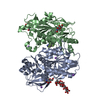
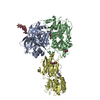
 Links
Links Assembly
Assembly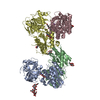
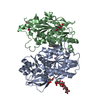
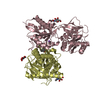
 Components
Components
 Homo sapiens (human) / Gene: GRIN2B, NMDAR2B / Production host:
Homo sapiens (human) / Gene: GRIN2B, NMDAR2B / Production host: 






 X-RAY DIFFRACTION / Number of used crystals: 1
X-RAY DIFFRACTION / Number of used crystals: 1  Sample preparation
Sample preparation SYNCHROTRON / Site:
SYNCHROTRON / Site:  APS
APS  / Beamline: 17-ID / Wavelength: 1 Å
/ Beamline: 17-ID / Wavelength: 1 Å Processing
Processing FOURIER SYNTHESIS
FOURIER SYNTHESIS Movie
Movie Controller
Controller


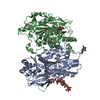
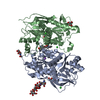
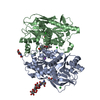
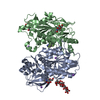

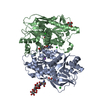

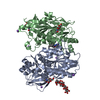
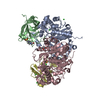
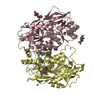
 PDBj
PDBj















